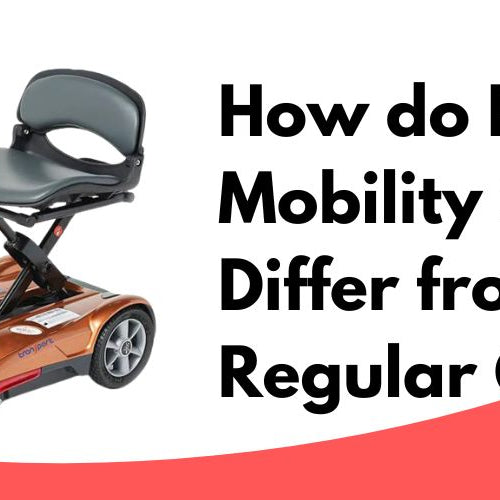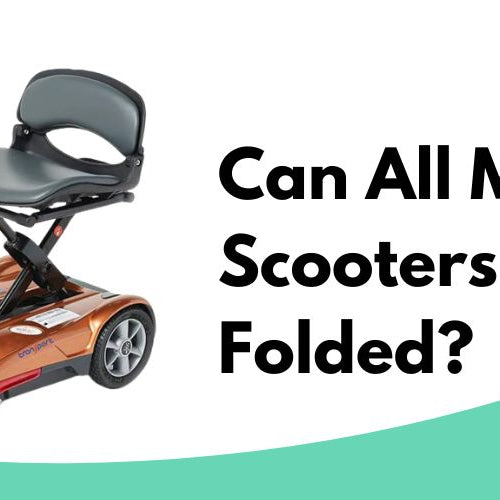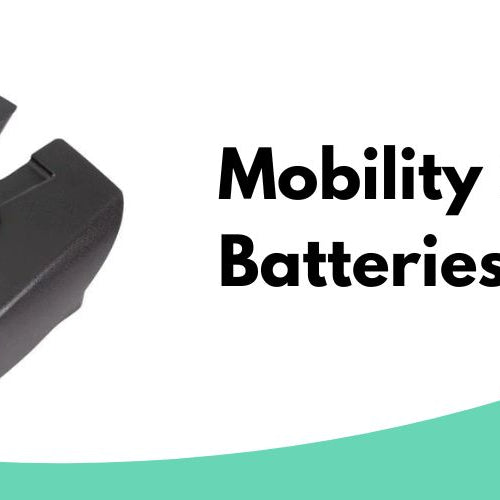Are mobility scooter seats interchangeable? This is a question frequently asked by individuals new to the world of mobility scooters, as well as those looking to upgrade or modify their current scooter. Mobility scooters offer valuable assistance to individuals with limited mobility, allowing them to maintain their independence and enjoy a more active lifestyle. One key aspect of these scooters that users often consider is the ability to customize or change the seating to meet their specific comfort needs.
Understanding whether mobility scooter seats are interchangeable begins with examining the various types of seats available. Some scooters come with standard seats, while others offer more advanced seating options with additional padding or ergonomic designs. The level of seat customization is not universal among all brands and models of mobility scooters, so it is essential to research the particular scooter in question to determine the possibilities for seat interchangeability. Additionally, the scooter's frame and assembly may play a critical role in the ease of seat adjustments and replacements. Keep in mind that selecting the right seat for any user is essential for providing adequate support and promoting correct posture while riding.
Types of Mobility Scooter Seats
When it comes to mobility scooters, comfort and customization are vital aspects to consider. One key factor of customization is the scooter seat. In this section, we will discuss two main types of mobility scooter seats: Standard Scooter Seats and Captain's Chair Seats.
Standard Scooter Seats
Standard scooter seats are common in most mobility scooters, providing basic comfort and support for the user. These seats are usually padded and have a backrest to ensure proper posture while riding. They often come with adjustable armrests and seat height adjustments to accommodate different user preferences and body sizes.
Some standard scooter seats are more advanced, featuring additional padding, ergonomic designs, and even lumbar support. Most of these seats can be removed and replaced if needed, as long as the replacement seat is compatible with the scooter's model and make. However, it's essential to check the compatibility before attempting to switch seats.
Captain's Chair Seats
Captain's chair seats are considered a premium option in mobility scooter seats, featuring more advanced ergonomic designs and additional features compared to standard seats. They are designed to offer superior comfort, especially for those who require extended travel on their scooters. Some common features of captain's chair seats include:
- High-back design, typically with built-in headrests for added support
- Greater padding and cushioning throughout
- Reclining and swiveling capabilities for increased positioning options
- Adjustable, flip-up armrests for easy access and personalization
Though captain's chair seats may appear more desirable, it's crucial to ensure they are compatible with the specific scooter model before purchasing or attempting to interchange them. Also, keep in mind that these upgraded seats tend to be more expensive than their standard counterparts.
In summary, both standard scooter seats and captain's chair seats have their own distinct features and benefits. When choosing a mobility scooter or looking to replace or upgrade its seat, always consider the user's specific needs, preferences, and compatibility with the scooter model to make the best decision.
Factors Affecting Interchangeability
When it comes to mobility scooter seats, the question of interchangeability comes to mind. Several factors affect whether or not a seat can be easily swapped between different scooter models or even between different brands. In this section, we will explore the main factors affecting the interchangeability of mobility scooter seats, including Seat Attachments and Rails, Seat Dimensions, and Weight Capacity.
Seat Attachments and Rails
The first factor to consider when evaluating the interchangeability of mobility scooter seats is the attachment system used. Many mobility scooters use a universal mounting system, which allows for greater compatibility between different seat models and scooter brands. However, some manufacturers might use a proprietary attachment system, limiting options for swapping out seats.
It's essential to assess the attachment points and rails on both the scooter and the seat to ensure they match up correctly. Look for common attachment systems like bolt patterns or rail systems, as these increase the likelihood of interchangeability.
Seat Dimensions
The overall dimensions of the seat play a crucial role in determining whether it can be seamlessly swapped out or not. While there might be some room for size variation depending on the scooter's design, it's important to match the width, depth, and height of the new seat with the original one, ensuring a comfortable and safe ride.
Take note of the scooter's available space and the clearance required for mounting and dismounting, as this will affect which seats can be interchangeably used. Moreover, don't forget to measure the distance between the attachment points on the scooter and compare it with the seat dimensions.
Weight Capacity
Another essential factor in determining the interchangeability of mobility scooter seats is weight capacity. Not all seats are built to support the same weight, and using a seat that is not rated for the scooter's maximum weight capacity can lead to structural failure or safety hazards.
It's important to choose a seat with a weight capacity that matches or exceeds the scooter's overall weight limit. Additionally, be mindful of any potential changes to the scooter's center of gravity when swapping out seats, as this could affect the stability and handling of the vehicle.
In conclusion, while there might be some level of interchangeability among mobility scooter seats, it's vital to consider the attachment system, seat dimensions, and weight capacity before attempting a swap. By paying attention to these factors, you can make a more informed decision when looking to upgrade or replace your mobility scooter seat.
Interchangeable Seat Brands and Models
Pride Mobility Scooter Seats
Pride Mobility is a well-known brand in the mobility scooter industry, offering a variety of models with different features. One of the questions that often arises is whether their mobility scooter seats are interchangeable. In general, Pride Mobility scooter seats are designed for specific models, though there may be some compatibility between certain models. To ensure a proper fit and secure attachment, it is best to consult the manufacturer or an authorized dealer for guidance on which seats are compatible with a specific scooter model.
Some Pride Mobility scooter models may have optional seat upgrades available for added comfort and support. These upgrades can include lumbar support, headrests, or even swivel functionality. However, these options may not be interchangeable across all models, so it's important to check with the manufacturer for details.
Drive Medical Scooter Seats
Drive Medical is another popular brand in the mobility scooter market, offering a wide range of models for various needs. Like Pride Mobility, Drive Medical scooter seats are typically designed for specific scooter models, with some potential for cross-compatibility. However, this compatibility can vary, and the best way to determine which seats can be used with a particular scooter model is to consult the manufacturer or an authorized dealer.
Drive Medical also offers various seat options and upgrades for their mobility scooters. These upgrades can include different cushion materials, armrest designs, and even seat suspension systems for added comfort. As with Pride Mobility seats, these options may not be universally compatible across all Drive Medical scooter models.
In conclusion, while there can be some interchangeability between certain mobility scooter seat models, it is best to consult the manufacturer or an authorized dealer to ensure proper compatibility and fit. Different brands, such as Pride Mobility and Drive Medical, have varying degrees of seat interchangeability, and understanding the options and limitations for each brand is crucial for users seeking a comfortable and functional mobility scooter experience.
Customizing Mobility Scooter Seats
Comfort and personalization are important aspects of mobility scooter use. One way to achieve this is by customizing the scooter's seating to better suit an individual's needs. In this section, we will explore various options for enhancing mobility scooter seats, including seat cushions and pads, lumbar support, and seat covers.
Seat Cushions and Pads
Seat cushions and pads can dramatically improve the comfort of a mobility scooter seat. They come in various materials, such as memory foam, gel, and air-filled options, which cater to different preferences and support levels. These cushions can help alleviate pressure points, ensuring a more comfortable and enjoyable ride for users. Some cushions even have built-in massaging features, providing relief for those experiencing soreness.
Lumbar Support
Lumbar support is essential for maintaining proper spinal alignment and reducing the risk of lower back pain during long rides. Many mobility scooter seats are designed with built-in lumbar support, while others may require the addition of a dedicated lumbar cushion. These cushions are typically contoured to fit the natural curve of the user's lower back and can be made from materials like memory foam, gel, or even air-filled bladders. Lumbar support cushions not only increase comfort but also promote healthy posture during scooter use.
Seat Covers
Seat covers are another way to improve the overall experience of mobility scooter users. They can protect the seat from spills, stains, and wear, while simultaneously providing an additional layer of comfort. Seat covers come in a variety of materials, such as neoprene, fabric, and velour, each offering different benefits depending on the user's needs. In addition to protecting the seat, covers can also be easily removed and cleaned, ensuring a hygienic and well-maintained scooter seat over time.
In conclusion, customizing mobility scooter seats with cushions, pads, lumbar supports, and seat covers can provide additional comfort and support tailored to individual users' preferences and needs. By considering these options, users can enhance their mobility scooter experience and ride in comfort throughout the day.
Frequently Asked Questions
How to identify my mobility scooter model?
Identifying your mobility scooter model is essential when looking for interchangeable seats or other components. First, check for labels or stickers on the scooter frame, which may include the brand name, model number, and other essential information. If you cannot find any labels, consult the user manual that came with your scooter, or visit the manufacturer's website for additional help.
Finding the scooter's manufacture year?
Determining the manufacturing year of your mobility scooter can provide insight into the compatibility of interchangeable parts, including seats. The manufacture year is often included on the identification sticker or label found on the scooter frame. If unavailable, you can contact the manufacturer with your model number for more information.
Differences between electric and mobility scooters?
Electric scooters and mobility scooters have some key differences, primarily in their design and purpose. Electric scooters are typically smaller, lighter, and designed for short commutes or recreational use. They often have a standing platform and handlebars for steering. Mobility scooters, on the other hand, are designed for individuals with limited mobility or disabilities. They have a comfortable seat, a more extended range, and higher stability, making them suitable for everyday use.
Adjusting mobility scooter seats?
Adjusting the seat on your mobility scooter is essential for comfort and proper support. Most seats can be adjusted in height, tilt, and backrest angles. To adjust the height, look for a lever or knob beneath the seat that allows you to move it up or down. To adjust the seat's tilt, find the adjustment knob or lever on the side of the chair, which lets you change the angle to your preference. Lastly, the backrest angle can usually be adjusted with a side lever, allowing you to find the most comfortable position.
Removing mobility scooter seats?
To remove the seat from your mobility scooter, follow these steps:
- Ensure the scooter is turned off and stable.
- Locate the seat release lever, which is typically found beneath the seat or at the base of the chair post.
- Push or pull the lever, depending on your scooter model, while lifting the seat vertically away from the base.
- Carefully set the removed seat aside, ensuring all components are accounted for and in good condition.
Before reattaching a different seat or upgrading your seat, confirm that the new seat is compatible with your scooter model.
Types of scooter seat mechanisms?
Mobility scooter seats come with various mechanisms that facilitate adjustment and customization. Some of the common mechanisms include:
- Swivel seats: These seats can rotate, making it easier to mount or dismount the scooter.
- Height-adjustable seats: These offer adjustable seat height to accommodate users with different leg lengths and preferences.
- Reclining and tilt-in-space seats: These seats provide additional comfort and support by allowing users to recline or adjust the seat angle based on their preference.
- Suspension seats: These are designed with built-in suspension or cushioning for added comfort during rides on uneven surfaces.
Ensure that any replacement or interchangeable seats you consider are compatible with your scooter's existing mechanism and mounting system.
For any other questions, reach out to us at Mobility Nest.






Leave a comment